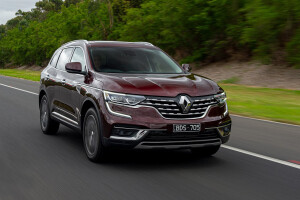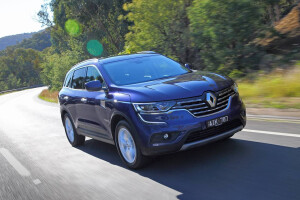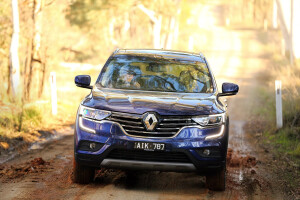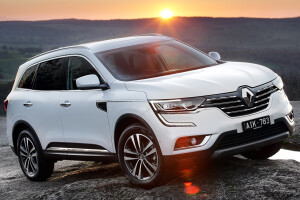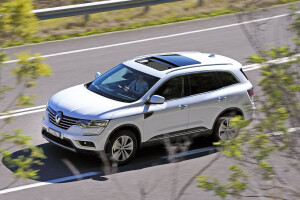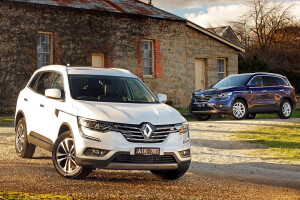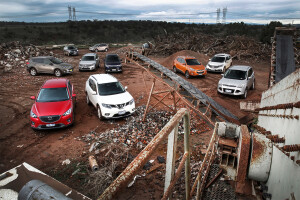Latest Review

2022 Renault Koleos Black Edition review
With only 400 units up for grabs, the Renault Koleos Black Edition has a tough job to do to make its mark in the already overcrowded medium SUV segment
Renault wants this Koleos Black Edition to turn heads, adding it to the middle of the four-strong line-up for customers who want a “statement piece”.
In its signature black hue, with some subtle but stylish details such as the French flag on the B-pillars and aluminium running boards, the limited-edition Koleos offers a classy and more aesthetically pleasing silhouette to what is otherwise a Nissan X-Trail underneath – powered by the same 2.5-litre naturally aspirated petrol engine paired with an identical automatic continuously variable transmission (CVT).
It’s an attractive and elegant design, but can the Black Edition offer more than just good looks?
Pricing and Features
The 2022 Renault Koleos line-up consists of four grades: Life, Zen, Intens 4x2 and Intens 4x4 – with the mid-range Black Edition nestled between the Zen and Intens.
Pricing for the range currently starts from $38,246 for the Life, with the Zen commanding $42,151 and Intens asking $48,920 (for the 4x2 configuration) and $51,212 (for the 4x4) respectively. Meanwhile, the limited-run Black Edition costs $42,000. All prices are drive-away.
Oddly this edition somehow costs less than its lesser-specced Zen sibling – albeit only by $151, bucking the trend of limited-time-only cars commanding a higher premium on account of their exclusivity and extra accoutrements.
As of July 1 this year, however, Renault will increased the cost of its entire vehicle range, so it’s worth checking our pricing story for the latest information.
Meanwhile, drive-away pricing for segment rivals, varies – it's in the ballpark cost of its rivals, but more popular models cost more for similar.
As standard, the Black Edition gets: 19-inch dark grey alloys, an 8.7-inch portrait infotainment touchscreen, Arkamys 3D sound system, Apple CarPlay and Android Auto (wired), sat-nav, hands-free key card, engine start button, automatic ‘walk away’ door locking, powered tailgate, 17-inch spare wheel, electrically-adjusted driver’s seat with electric lumbar support, reclining rear seats, dual-zone climate control, heated and cooled front cup holder and rear privacy glass.
Metallic paint is also standard on the Black Edition – ours was black (quelle surprise), but you can opt for grey or white free of charge. Red is also available as the standard colour on other grades, where white, grey and black all cost $800 extra.
To set the limited-edition Koleos apart from its regular look, the Black Edition gets: gloss black roof rails and mirrors, dark grey front and rear skid plates, silver side steps and ‘limited’ badging – as well as black leatherette upholstery with yellow contrast stitching on the dash, seats and floor mats, which is complemented by a beige headliner so it doesn’t feel too dark inside.
It’s these details that make this special variant stand out – both the cabin and exterior details – are classy and do a lot to lift the overall package.
The aesthetics are further boosted by sleek chrome strips around the windows, along the side profile and the door handles. Even though there are some harsh plastics in the cabin, they are muted enough to give the illusion of a more upmarket look.
In spec terms, it’s closer to the range-topping Intens that also has 19-inch wheels and the 8.7-inch screen – but the Black Edition loses out on the Nappa leather interior, sunroof and premium Bose sound system. In comparison, the Life gets dark carbon cloth trim and 17-inch wheels while the Zen features dark carbon leatherette and 18-inch rims. Both make do with the lesser 7.0-inch touchscreen.
Other than accessories, there are no other costed options for the Koleos Black Edition. Buyers can, however, buy the Easy Life Package for $2000 on the Zen, which adds the 8.7-inch screen and hands-free tailgate.
Said infotainment system, however, proved divisive in our family, with some feeling it appears awkward and outdated, while others said it was unassuming if not altogether that modern. Looks aside, its overall functionality was not too complex, but it couldn’t be called straightforward or user-friendly either – getting to the bottom of where to find various things took some patience.
Adding to the general confusion was figuring out what half the controls on the steering wheel actually did. While the right-hand side covered the basics of changing radio stations or volume, the left-hand side was not instinctive at all.
During our whole time with the car, we couldn’t get to grips with the R and O buttons and in fact, it took a Renault rep scouring the manual for the relevant information to find out. As it happens, the R button is to put the cruise control into standby and the O reboots it.
Furthermore, the on/off for the cruise control system is actually in the centre console and nowhere near the steering wheel – as is the case with other Renault models.
It seems an oddity of French design that some core functions are in strange places – in addition to the cruise control, Renault, Peugeot and Citroën all put their door locking/unlocking control on the dash near the touchscreen when it’s far more intuitive to have it on, you guessed it, the door. Bizarre.
Other quirks of the Koleos include the sat-nav loudly insisting it must still route you to your destination unless you physically un-program it – even though you’ve already arrived there and since left.
The key is quite funky, and its credit card-like proportions mean it fits snugly into the palm of your hand, even if it is slightly awkward to keep hold of if you have other things to carry at the same time – luckily the car has the soft-touch auto unlocking doors to make things easier.
The powered tailgate is another nice addition but unfortunately the button to control it looks and feels quite cheap.
It's now five years since the Koleos was awarded a five-star ANCAP rating, with the assessment program going through a number of changes since then.
But even so, the Koleos we had on test has access to the full suite of Renault’s safety systems, including: electronic stability control, anti-lock braking system (ABS), cruise control, emergency brake assist, forward collision warning, lane departure warning, blind-spot monitoring, rear view camera (good quality, if a little fuzzy at night), front, side and rear parking sensors (accurate but not overzealous) and hill start assist.
Comfort and Space
As mentioned earlier, the aesthetics of the Black Edition are really where this car excels and nowhere is that truer than in its interior. The look and feel of the fabrics in the cabin are of reasonably high quality, though not to the degree you’d be able to call them premium or luxury, and the contrast yellow stitching is striking.
There are still a few hard plastics to be found, and the black leatherette found on the seats, trimming the centre console and on the dash – though doing its best – is still trying to be something it’s not.
Visibility is good too – though we would have loved the electrically-operated panoramic sunroof available on the Intens – and the rear windows benefit from privacy glass as standard.
The heated front seats themselves are comfortable and, thanks to the electronic toggles on the side, the driver’s position can be easily altered to find the perfect setup – sadly no such luck for the front passenger.
What can’t be adjusted, and did in fact cause us quite a degree of discomfort during our time with the car, was the pedal position. When braking or accelerating the right foot has to be bent harshly upwards to accommodate it, leading to strain on the top of the foot and ankle. No amount of shifting the seat adjustment seemed to make any difference, and that would be a real gripe for long-term ownership in our minds.
Up front, there are plenty of mod cons to be found, with two USB ports and a 12V socket, as well as what Renault says are two ‘heating and cooling’ cup holders. It seemed to us, however, that there was actually space for four drinks in the centre console – two normal-sized and two smaller ones, possibly for securing European-style slimmer soft drink cans.
There is plenty of space throughout the cabin – just watch out for the oversized visors that can, and will, bonk you on the head getting in and out if you’re not careful. The boot too is capable of holding an impressive 458L of cargo with the second row of seats up and 1690L when folded down.
Legroom is generous, and rear occupants sit higher than in the front too. Importantly, it has proved the easiest car of its segment we’ve tested so far to fit a child seat side-by-side with two adults – both comfort-wise and for ISOFIX installation. The seatbelts can even be clicked into place without the usual 20-minute wait for Nana to figure out “where it’s gone”.
There are no frills for rear passengers though, which is a downside, aside from two cup holders in the armrest if no one needs to sit in the middle. Map pockets made from netting feature on seat-backs, which look and feel quite cheap these days, but do the job.
On the Road
The 2022 Renault Koleos line-up is powered by just the one 2.5-litre four-cylinder petrol engine with an automatic continuously variable transmission (CVT) – the same set-up found in the Nissan X-Trail range.
While all grades utilise the 2.5-litre donk and CVT, only the top-spec Intens 4x4 gets all-wheel drive, while all others, including the Black Edition, are driven by the front wheels.
The engine makes 126kW and 233Nm – not quick, but it’s not underpowered either. While the acceleration is a bit of a non-event, the Kumho Crugen tyres can create their own unwanted drama, sometimes struggling for grip on a tight turn taken at speeds as low as 40km/h.
It can sound like you’re driving the getaway car for a bank job, which is at odds with the otherwise fairly relaxing driving experience.
It could also use more torque for a vehicle of its size – as offered in competitor models with a diesel powertrain.
Renault did introduce a 2.0-litre turbo-diesel in 2017 before removing it again from the updated Koleos range when it arrived in 2020 due to minimal sales. A shame, as it would make it a more compelling experience to drive and also improve the fuel economy by roughly 2L/100km. While the turbo-diesel offered 6.1L/100km, the petrol’s rating comes out at 8.1L/100km.
Though the transmission felt surprisingly capable and not excessively noisy in our recent test of the current-gen X-Trail, with no noticeable lag at any point, the same can’t be said for the effect an identical transmission has in the Koleos.
In the French-branded version, we found the CVT to be strained, sounding like it robbed the power and potential of the engine. Under hard acceleration, it also feels like it’s hunting for the right ratio and makes a bit of a racket doing so. There are no paddles for switching gear in manual mode, so you need to row the shifter back and forth old-school style. At least changes executed this way are reasonably responsive.
The ride, however, is configured to be comfortable and smooth. There’s no harshness in the damping and the Koleos feels unruffled by most road surfaces, even in the middle back seat where traditionally you tend to feel more pronounced jarring over speed bumps or potholes.
However, this does come at the expense of some body roll through tighter corners and roundabouts, and also shows up the light and vague steering.
As the Koleos is more likely to be driven on straighter suburban streets than on twisty roads, this might not be much of a deal-breaker.
That said, although braking power is perfectly adequate, we can't overlook the fact that our experience of the Koleos was so dominated by a feeling of low-speed understeer and lack of grip – made even worse in Melbourne’s wet Autumn months.
Just one configurable driving mode is available in the Koleos and that’s Eco. But it’s pretty ineffective and zaps all power, making it more effort than it’s worth.
Ownership
Renault Australia offers a five-year, unlimited-kilometre warranty, with five years’ free roadside assistance and capped-price servicing.
Service costs for the 2.5-litre petrol Black Edition are:
VERDICT
While the 2022 Renault Koleos Black Edition looks the part, offering an more premium package at a better price than the closely-matched Zen grade, it is let down by its driving performance compared to other SUVs going for that ‘premium’ vibe in the segment.
In fairness to the Renault, it does have kerb appeal, but we’re just not sure we agree with the carmaker’s sentiments that it “represents a premium European offering combined with genuine value thanks to its high levels of safety, technology and cutting-edge design”.
For only a matter of a couple of hundred dollars – or a few thousand at most – some rivals offer a better driving experience and match, or better, the Koleos on spec.
Though the Black Edition is the new wild card Renault has brought to the table, its beauty only runs skin deep and that might not be enough for it to win hearts and minds in the battle of the mid-sized SUVs.
2022 Renault Koleos Black Edition specifications
Score breakdown
Things we like
- Lots of space
- Black Edition styling
- Premium features
Not so much
- Poor grip and traction
- Loose steering
- CVT loud and strained
News
-
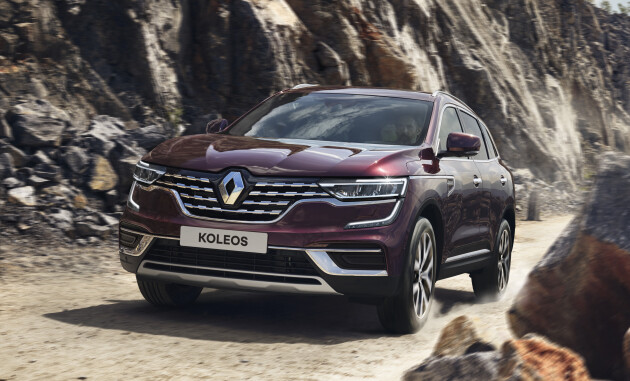 News
News2023 Renault Koleos pricing and features
Renault's highest-selling model – the Koleos medium SUV – has received an update for 2023 with a new AWD grade and more standard equipment – but pricing has increased by up to $2900
-
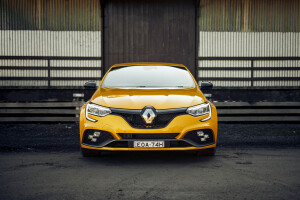 News
NewsRenault Australia announces upcoming price increase, effective July 1
The rise will be Renault's second in less than six months
-
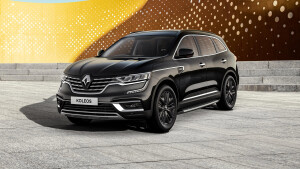 News
News2022 Renault Koleos Black Edition joins range
Renault has reintroduced the limited Koleos Black Edition to sit in the middle of the line-up
-
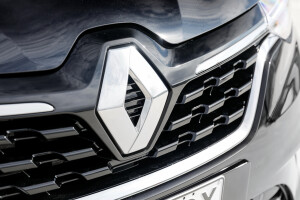 News
News2022 Renault prices increase across model range
The changes will come into effect from March 1, 2022
-
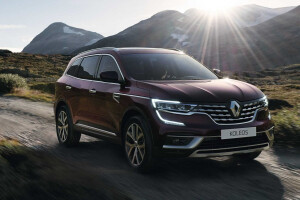
2021 Renault Koleos pricing and specifications
-
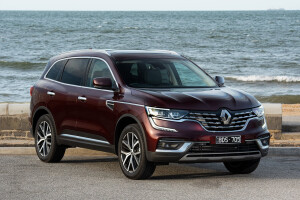
Renault Koleos range gets 7 year warranty upgrade, drive-away pricing
-

2020 Renault Koleos gains fresh look, loses diesel option
-
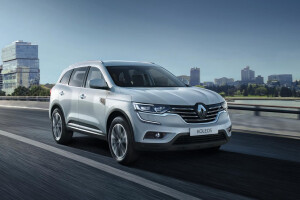
Renault Koleos gets seven-year warranty and free servicing


